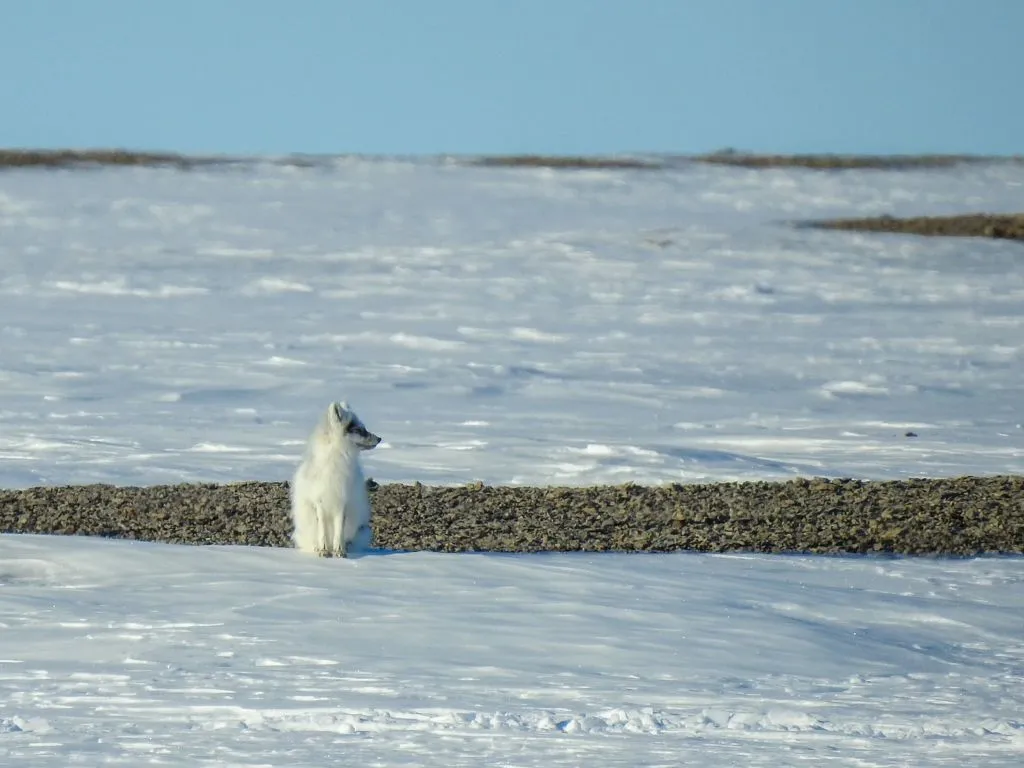
The Arctic Fox is Canada's second-smallest wild canid after the Swift Fox. Don't let its extremely thick fur fool you, this small Fox only weighs about 5kg or 11 pounds on the heavy end. The Arctic Fox is an extreme shedder, who loses the majority of its thick white or blue-grey coat over the spring. The back, tail and outer legs will turn to a brown and the belly will become a yellowish white like polar bear fur.
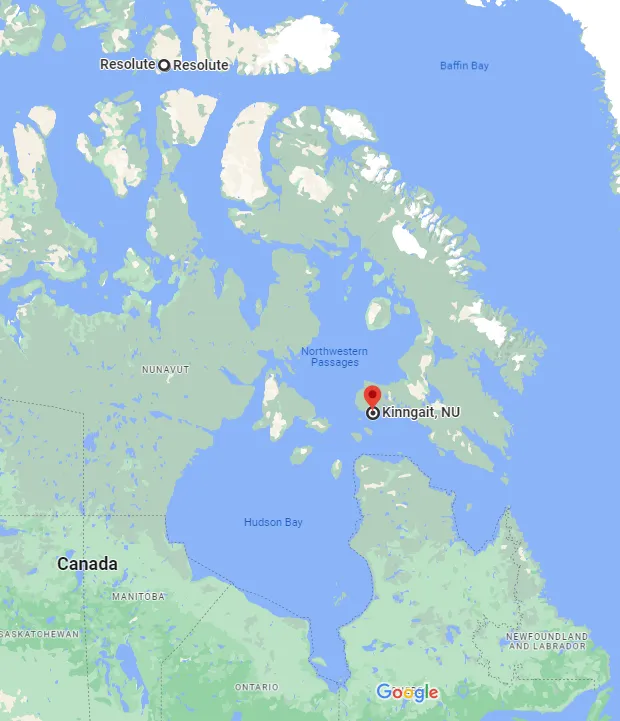
The Arctic Fox generally has a territory that varies in size from 16 to 25 square kilometers. But the foxes are capable of traveling much grater distances, with some tracked animals crossing from as far south as Hudson Bay area, all the way up to Resolute, Nunavut. Speaking in generalities, Arctic Foxes are known as nomadic creatures, traveling far in search of food. But that does not stop them from denning down. Arctic Foxes prefer to dig dens in the soft soils that are a bit higher in elevation, allowing for them to choose terrain that isn't rock-hard due to permafrost. Due to the extremely harsh terrain of Nunavut it is not uncommon for fox dens to be used for over a century by various generations of Arctic Foxes.
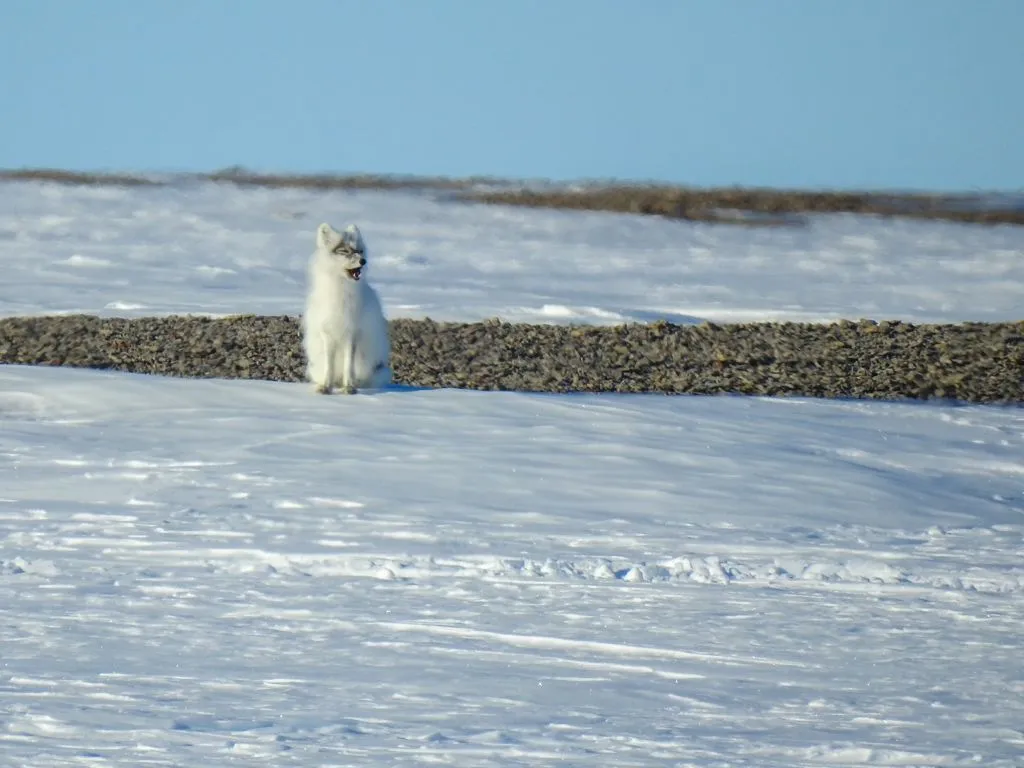
Arctic Foxes can mainly be found on the arctic and alpine tundras of Nunavut, as well as in coastal areas and sometimes in the forested portions of their southern reaches. In these areas, the Arctic Fox hunts Lemmings and Voles who make tunnels below the snow to avoid the frigid surface temperatures. An opportunistic hunter, arctic foxes will also eat arctic hare, ptarmigans and, when available, scraps left over from the hunting activities of wolf, Polar bear, or humans. Scientists have seen a correlation between Arctic Fox and the boom-bust population dynamics of Lemmings, where a population crash in Lemmings will result in a severe decline in fox numbers. cough PETA will have you believe the animals starving to death is more humane than hunting them and managing their populations. cough cough Sorry, something stuck in my throat.
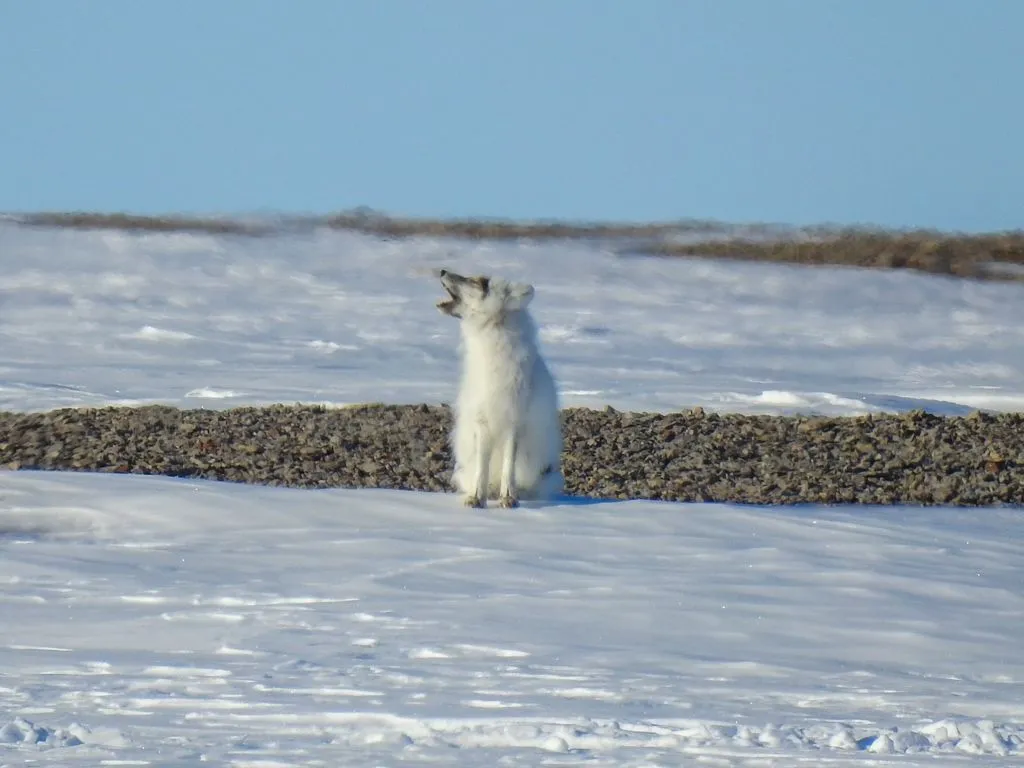
Another troubling factor of the Arctic Fox is that its extreme resilience to cold climates makes it a well suited host for the Rabies virus. Here are just a few articles from this year alone on the increase in rabid fox attacks all across Nunavut.
https://nunatsiaq.com/stories/article/iqaluit-sled-dog-tests-positive-for-rabies/
https://nunatsiaq.com/stories/article/2-more-nunavut-foxes-test-positive-for-rabies/
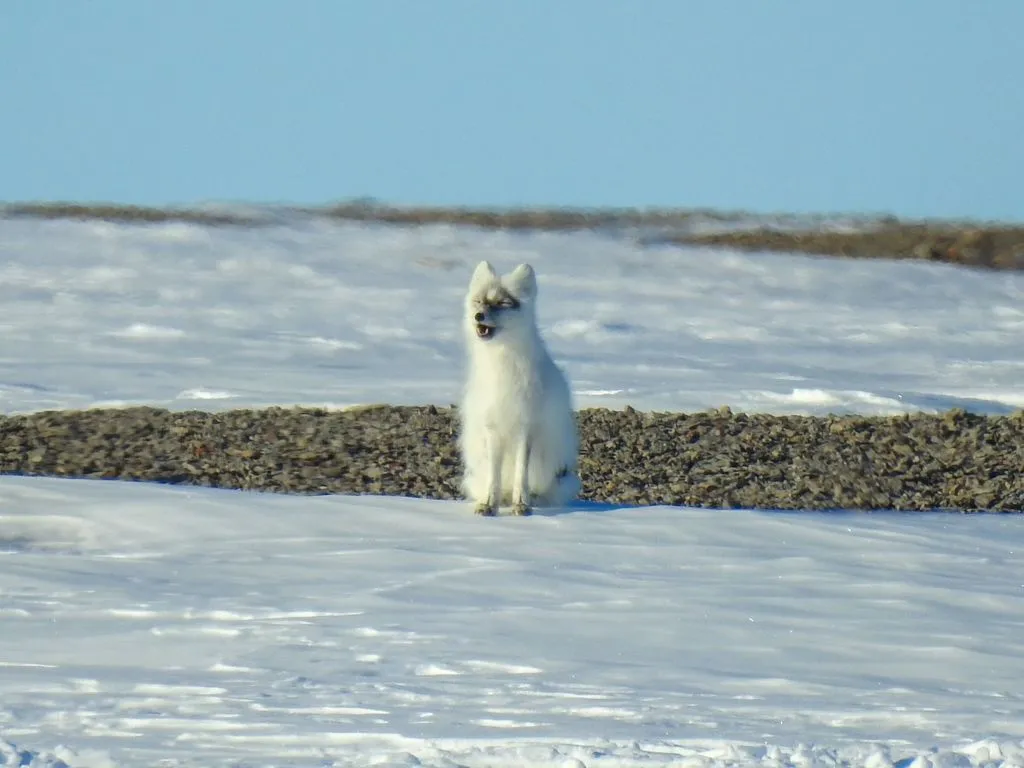
Taken with a Nikon P900 at full zoom in "Bird mode," not using digital zoom. Equivalent to around 1200mm. Edited in Lightroom.
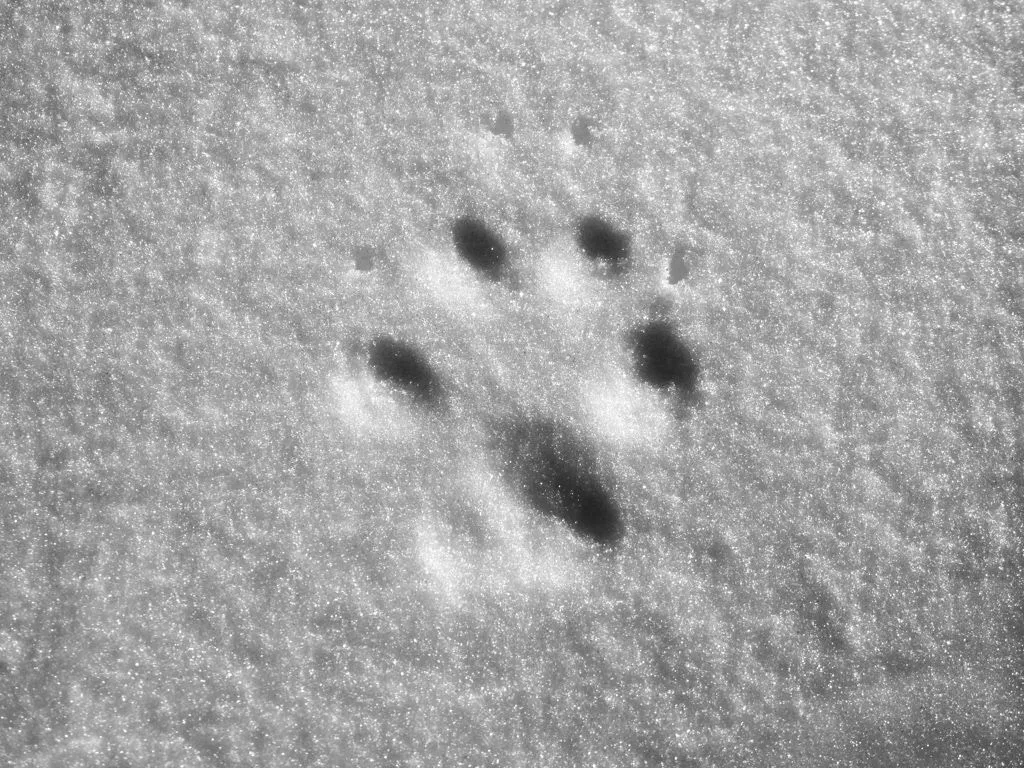
Find my artwork for sale exclusively on NFTShowroom.com
Find my photographs of Nunavut scenery and Wildlife on Lensy.io
Follow me on twitter here: Hive Related Account / Photography and Art Account
I am also on Instagram: But only Photography and Art
